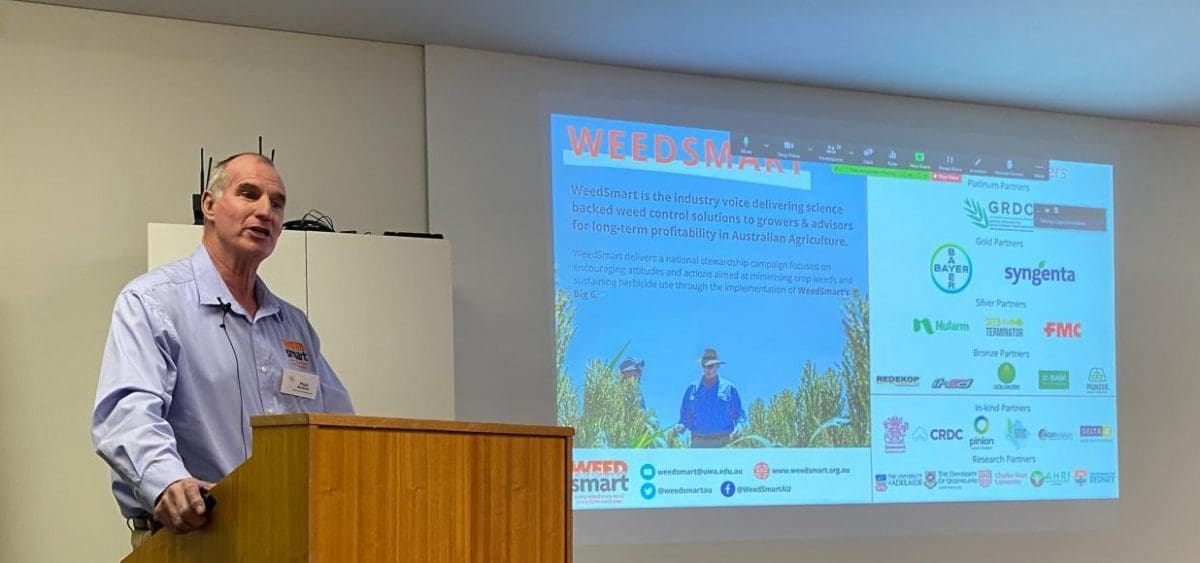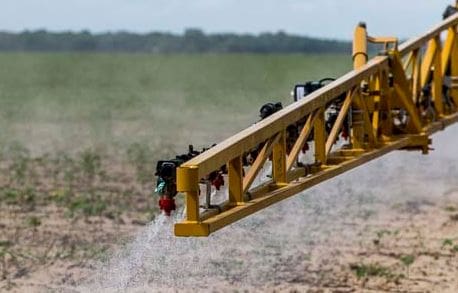
WeedSmart northern extension agronomist, Paul McIntosh, urges the agricultural sector to take up the challenge of defending the use of glyphosate or risk losing the valuable chemical.
AGRONOMISTS and farmers need to vigorously defend the use of glyphosate at every opportunity, but at the same time develop a backup plan in case the important broadacre chemical is withdrawn from the market in the future.
That was the message from long-standing ag consultant and WeedSmart northern extension agronomist, Paul McIntosh, in a presentation to the Crop Consultants Australia 2020 Regional Workshop in Goondiwindi, Queensland.
Addressing the question ‘What if we need to farm without glyphosate and other chemistries?’, Mr McIntosh said glyphosate had proven to be a safe, reliable chemical in the more than 40 years since it was developed in the United States.
 Since 1996, its use globally has risen 15-fold and in Australia it has become the key to the no-till farming revolution that transformed Australian agriculture.
Since 1996, its use globally has risen 15-fold and in Australia it has become the key to the no-till farming revolution that transformed Australian agriculture.
But Mr McIntosh said while science had shown that glyphosate was one of the safest herbicides on the market, it was coming under increasing question by the wider community.
He urged the agricultural sector to take up the challenge of defending its use or risk losing the valuable chemical for which, to date, there was no equivalent replacement.
“Our most widely used herbicide is under huge scrutiny. We have a fight on our hands to protect it. When you get the opportunity to stand up for glyphosate it needs to be done. Science is on our side, but we need to do more,” he said.
Backup plan
At the same time, he encouraged agronomists and farmers to think about what they would do if glyphosate was no longer available.
“You need to have a plan B and plan C. If glyphosate gets taken off the market, what are you going to do? You need to have a plan you can use,” he said.
“The challenge for everybody is to come up with a situation that A: you know about, and B: you can use in your farming system.”
Mr McIntosh said there was no single answer as everyone’s situation was different.
But managing hard to control weeds without glyphosate would involve significant change and demand new knowledge and new skills.
He foreshadowed that some of these changes might include:
- An increase in the use of residual herbicides. That is already happening because there is so much Group M resistance.
- There will be better mechanical and non-herbicide options. Rodweeders and blade ploughs might come back. Skimming through just underneath the surface killing the weeds may come back again. There might be a smaller blade that goes through and ‘scuffles’. There might be inter row blade ploughing.
- There are going to be more sensor cultivators and chippers and they are going to get wider and bigger.
- Livestock may become more utilised. I walk around some parts of the Darling Downs and there’s not a fence in sight, but further out on the western Downs where there are still fences people may be in a position to involve livestock. I remember in some of the western areas we couldn’t control sowthistle. So, what we used to do was put our foot on the fence and let the sheep walk in for three days. They’d eat all the sowthistle. That was one of the basics of weed control in the early days of chickpeas.
- Optical spot spraying technology and green-on-green will become more widespread. Steam and microwave technology may become more of an option. Sure, it takes a lot of energy to drive that, but it may become an option because we may not have another option.
- People will need to develop more understanding and adoption of the WeedSmart Big 6 tactics.
- Social licence may restrict herbicide use and so may demands from grain buyers in relation to maximum residue limits (MRLs). Both suggest reduced herbicide dependency in the future. Some growers are transitioning out of depending on herbicides into using other things like sheep and mechanical machines to make what they are trying to produce more acceptable.
- Cover crops can be used for weed control, competition, stopping weed seed from being produced. If you can stop an annual plant from going to seed you will never have herbicide resistance.
- There is going to be more patch managing, and strategic or targeted tillage.
- In a situation where people have given up all hope of herbicide they will have to reset and go in with large cultivation. That could be a mouldboard, could be a chisel plough – something to stop the weeds going to seed.
- There might be more hay cutting and more pasture rotations. That’s not going to suit everyone (where there are no fences), but some areas may use a pasture rotation to provide crop competition, animal grazing and weed seeking.
- There will be more mapping of weed areas for a more concentrated site-specific herbicide application.
- With concerns about residues in crops like mungbeans, why are we using herbicide to desiccate a crop when we can get the crop off in other ways? There has been interest about swathing mungbeans (where the plants are dropped on the ground and picked up with a harvester a few days later) because we can do it without using any herbicides for desiccation like glyphosate and Reglone which are coming under increasing pressure from the world markets we sell our pulse crops to.
Grain Central: Get our free cropping news straight to your inbox – Click here



HAVE YOUR SAY